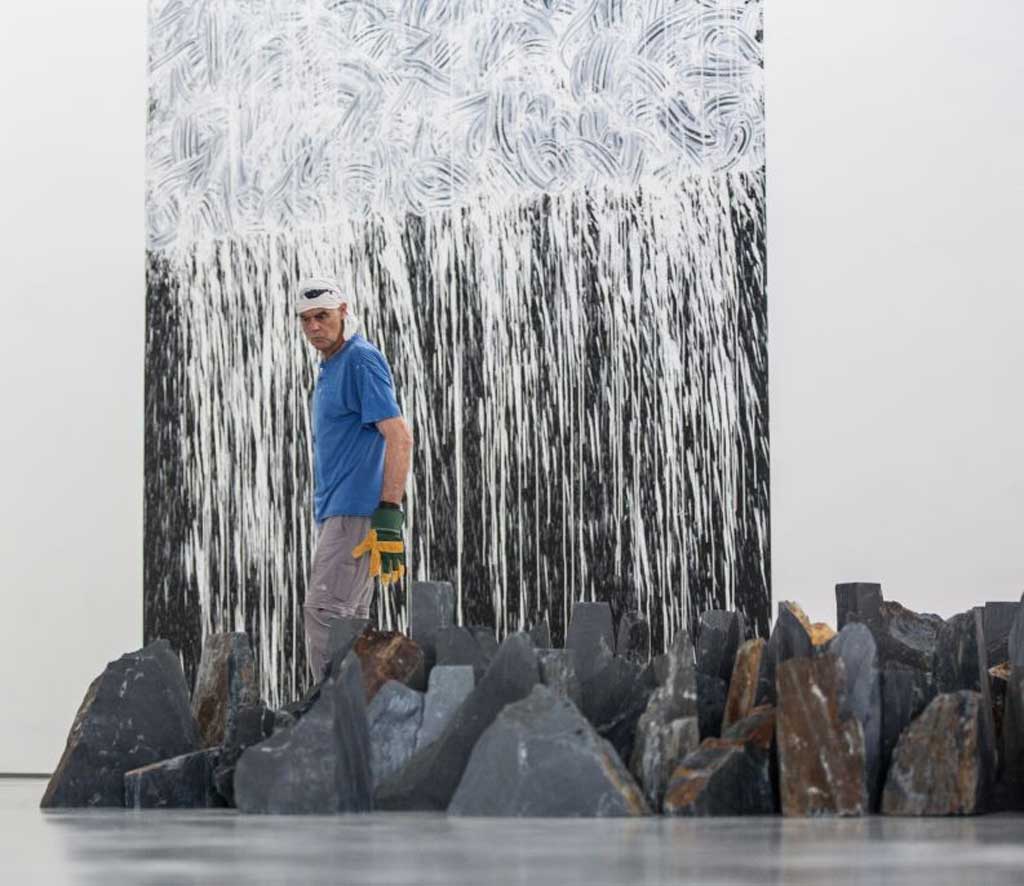In The Studio: Richard Long, sculptor
'My work is my studio... my work is walking from place to place'

Your support helps us to tell the story
From reproductive rights to climate change to Big Tech, The Independent is on the ground when the story is developing. Whether it's investigating the financials of Elon Musk's pro-Trump PAC or producing our latest documentary, 'The A Word', which shines a light on the American women fighting for reproductive rights, we know how important it is to parse out the facts from the messaging.
At such a critical moment in US history, we need reporters on the ground. Your donation allows us to keep sending journalists to speak to both sides of the story.
The Independent is trusted by Americans across the entire political spectrum. And unlike many other quality news outlets, we choose not to lock Americans out of our reporting and analysis with paywalls. We believe quality journalism should be available to everyone, paid for by those who can afford it.
Your support makes all the difference."Not twigs, sticks!" Richard Long corrects me. His height – 6ft 4ins – and his lowering, bushy eyebrows make him a little intimidating. We are standing by Somerset Willow Line, a work from 1980 recreated here in the Hepworth Museum, Wakefield. Not a promising start to a conversation. I had requested to see the artist in his studio, and now we are standing here, because, as Long puts it, "my work is my studio".
Settling on a wooden bench facing the work, he tells me that he first used sticks in 1968, when he had his debut show in the Düsseldorf gallery of the prescient Kaspar Koenig, who also launched the career of Gilbert and George, among many others. Long brought his materials to Germany from the Avon Gorge, "not knowing how it would look". "Koenig was great," he reminisces. "We were at a party in Krefeld the night before and then only got in at 2am, finished making the work at daybreak, and the gallery opened at 10am."
Long was born in 1945 in Bristol, where he still lives and works. He was nominated for the Turner Prize in 1984, 1987, 1988 and 1989, when he won. He represented Great Britain at the 1976 Venice Biennale and Tate Britain gave him a one-man show in 2009.
I ask, as it seems like a drawing in space, if the stick work refers to David Smith? "My work is analogous with many things; it could just as well be with Arte Povera or Minimalism." There also seems an affinity with Carl Andre in the way that Long's work connects the viewer to the ground. "Carl said, 'my work is place'. Mine is walking place to place," says Long. His work may refer to many things, but it is his unique way of using materials as basic and personal as walking or handprints in mud as his interventions with architecture or nature that makes him such a recognisable artist.
Long lollops off to oversee the installation of A Day's Walk Across Dartmoor Following the Drift of the Clouds, a text work on a nearby wall. He says the idea to use the room came late in the day and he needed "a work that was a one-liner," adding, "It is a simple, classic work." He turns from the text work to a nearby photo work and says, "The cactus branches in the photo are not about the branches, but are embedded in the whole place. It is about a particular place I found. My work is place."
Artists Rooms: Richard Long, Hepworth Gallery, Wakefield (hepworthwakefield.org) to 14 October
Join our commenting forum
Join thought-provoking conversations, follow other Independent readers and see their replies
Comments